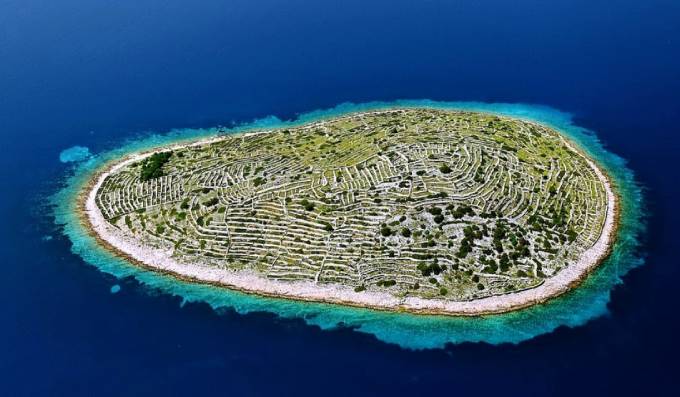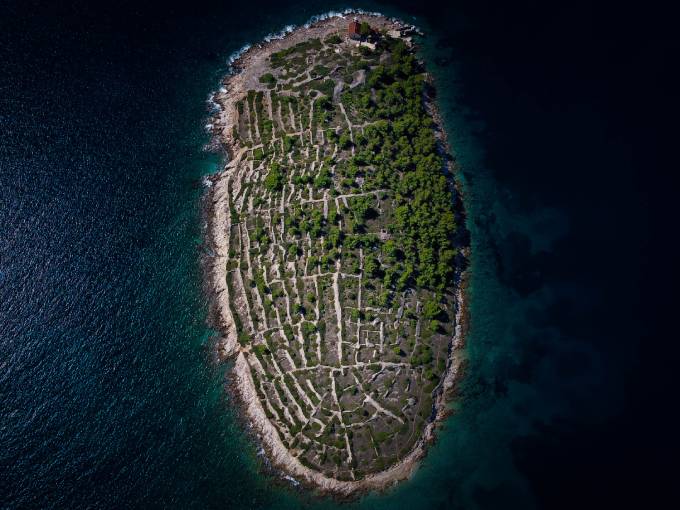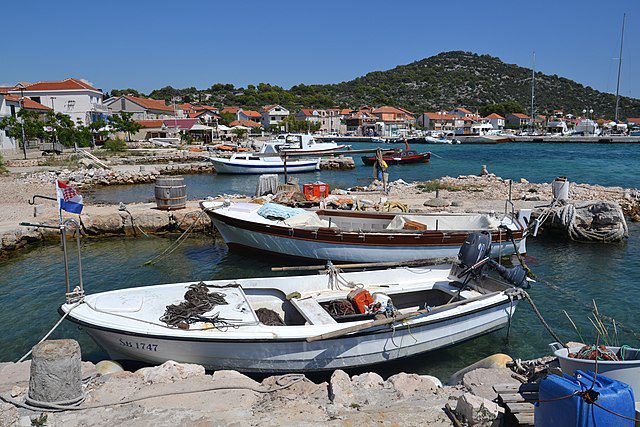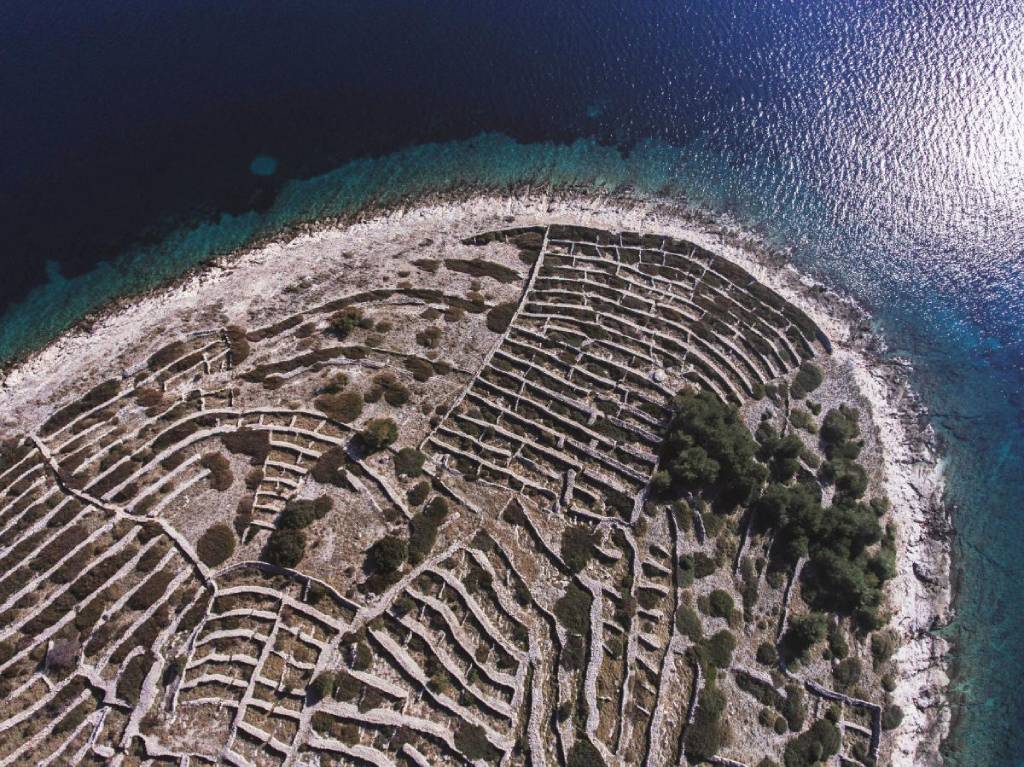Croatia is the perfect vacation destination. Croatia has gained popularity as one of Europe’s prime tourist destinations, featuring pristine beaches, ancient city walls, and rich history. The clear waters of the Adriatic Sea beckon vacationers from around the world to relax and explore.
Another bonus of visiting Croatia?
The Croatian islands! Island-hopping through the Adriatic Sea is ever-popular, as Croatia has 79 islands, 525 islets, and over 600 smaller rocks or reefs. While only 48 are inhabited, even the abandoned ones boast compelling backstories.
Baljenac Island
This tiny island in the Šibenik archipelago off the Dalmatian coast only covers half a mile of land. However, the structures upon it are impressive nonetheless – so remarkable that it’s under consideration for inclusion on the UNESCO tentative list.

The island of many nicknames
Baljenac, or Bavljenac, is also known as the Island of 1000 Walls. This nickname comes from the 23 kilometers of walls creating a maze across the land: these walls, or suhozid in Croatian, twist and curve around the oval-shaped island.
This is where its other nickname comes from: Fingerprint Island. The stone lace pattern makes it look like a human fingerprint from above.
Why were the dry stone walls built?
Were they part of a fortress? Were people trying to build a city? Not exactly.
While these are both exciting hypotheses, the actual purpose is far more mundane: agriculture.

Protection from the elements
These suhozid were built to define agricultural borders and protect crops from strong winds. The local community created vineyards on Baljenac and planted olive trees, figs, and other fruits.
Who built them?
The people living on the nearby island of Kaprije, just off the coast of Croatia, saw the potential of Baljenac. The residents seized the opportunity to create agricultural zones on the smaller, neighboring island to grow food and save space on their island.

Is Baljenac inhabited?
Nope, and it has never been. Baljenac is too small, and, as the dry stone walls show us, the land is too difficult to cultivate. The people who built the walls simply wanted to grow food and make wine.
While the islet is no longer used today, the walls are an incredible reminder of how well it served past communities.
Can you visit Baljenac Island?
Of course! But be respectful. The locals are concerned that the influx of tourists will damage the walls. You can get there via taxi boat from Šibenik, the closest mainland city.
Protecting cultural heritage
The Croatian people are proud to call Baljenac their own, which is evident in how they’ve treated it. The Croatian government has also recognized the importance of this.
UNESCO campaign
Croatia is trying to get Baljenac onto the UNESCO list of World Heritage Sites. A spot on the cultural heritage site list would guarantee protection status for the small but important islet. The conservation department in Šibenik works hard daily to make this happen.
Conclusion
Baljenac is one of Croatia’s most unique pieces of land. Building a 23-kilometer labyrinth of dry stone walls on such a small island is an incredible feat, and the crops grown, served the community well. Croatia’s giant fingerprint is undoubtedly worth checking out.


